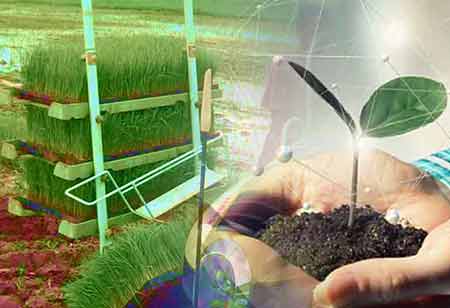Thank you for Subscribing to Agri Business Review Weekly Brief
Advantages of Multiple Cropping Systems
Multiple cropping entails cropping intensifying in temporal and spatial dimensions.

By
Agri Business Review | Thursday, August 25, 2022
Stay ahead of the industry with exclusive feature stories on the top companies, expert insights and the latest news delivered straight to your inbox. Subscribe today.
Multiple cropping is the practice of rising two or more two crops on the same field for a year.
FREMONT, CA: Multiple cropping entails cropping intensifying in temporal and spatial dimensions. Multiple cropping is a philosophy of the highest crop production per land area with minimum soil health deterioration.
What is the Multiple cropping index (MCI)?
When the operational holding is examined, the multiple cropping index (MCI) is decided by the total area ingrained divided by the total arable (culturable) area. If the value is three or more, it is a most hopeful, intensive cropping farm.
Types of multiple cropping
In the most efficient ways, multiple cropping is classified into two major categories-
1. Sequential cropping
2. Intercropping.
1. Sequential cropping system:
Definition: Raising two or more crops in sequence on the same field per year is named sequential cropping. The next crop is planted after the former crop has been harvested; crop intensification is just in the time extent; there is no intercrop contest. Therefore, farmers manage only one crop simultaneously in the same field.
Types of Sequential cropping
Four types of sequential cropping are usually practiced. They are:
• Double cropping: cultivating two crops per year in series. For example, rice goes after wheat or potato or mustard; maize is succeeded by groundnut; wheat goes after cotton. In these conditions, cropping intensity is 200%.
• Triple cropping: cultivating three crops per year in succession in a field in a year; thus, cropping intensity is 300%, for example, rice-potato-rice, cow pea-mustard-jute, or rice-potato-cow pea.
• Quadruple cropping: cultivating four crops per year in sequence
• Ratoon cropping: farming of crop regrowth after harvest, even though not inevitably for grain.
2. Intercropping system:
Definition: Growing two or more crops concurrently on the same field is called intercropping. Crop intensification is both temporal and spatial; intercrop competition occurs during all or part of the crop growth period.
Intercropping is an old practice utilized by subsistence farmers, especially under rainfed conditions. It helps arrange a balanced diet, reduces labor peak, and minimizes crop failure risk. It has also been implied that intercropping reduces pests’ adverse effects, provides higher returns, and protects the soil against erosion.
Types of Intercropping
Intercropping may also be of four types:
1. Mixed intercropping: growing two or more crops with no distinct row arrangement.
2. Row intercropping: growing two or more crops at once; one or more crops planted in rows.
3. Strip intercropping: cultivating two or more crops in diverse strips large enough to permit self-reliant cultivation but pretty narrow for the crops to interact agriculturally.
4. Relay intercropping: growing two or more crops concurrently during part of the life cycle; a second crop is farmed after the first crop has achieved its procreative stage of growth hut before it is ready for harvest.
What are the benefits of multiple cropping?
Modern intensive cropping systems have formed the following good impact in Bangladesh:
• Advanced stability of food and feed supply throughout the year;
• Expanded productivity per unit area, time, input, and total production accompanied by an increase in the total income of the farmer;
• Enhanced distribution of income throughout the year with quick out turns and thus an increased chance of recycling working capital;
• Expanded total employment, labor distribution, and other capital use over the year and opportunities for on-farm seed production, preservation, processing, and marketing.
• Decreased the scope of soil erosion and degradation;
• Magnified the possible utilization of land, residual effects of manures, fertilizers, moisture, and management practices;
• Reduced the rental value, irrigation charge, and other imputed costs per unit of production;
• Widened the scope to select and substitute crop varieties matching the agro-ecological situation, the cropping pattern, and programs according to home needs and market competitions;
• Enlarged the possibilities of almost complete removal of weeds as reduced fallow period minimizes the reproduction of weeds;
• Enhanced the nutrition for the farm family from crop diversification;
• Formed employment opportunities for farm laborers and others related to the processing and marketing agricultural products.
The disadvantages of multiple cropping:
Because of intensive cropping, adverse effects have been observed in nutrient mining and soil health, resulting in soil degradation if it doesn’t follow proper crop management practices.





